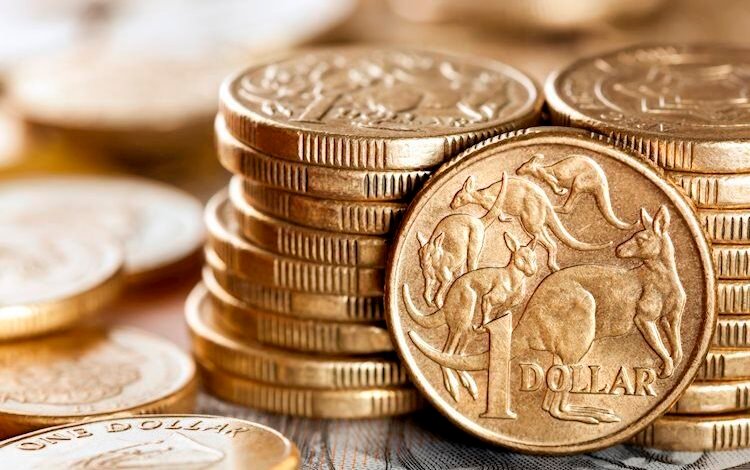Australian Dollar declines after high-tier US data, Chinese worries

- AUD/USD declines due to modest US dollar gains after a packed economic calendar.
- Weak Chinese PMIs weigh on the Australian Dollar.
- RBA expected to maintain a hawkish stance, supporting AUD/USD, but concerns over China’s economy linger.
The AUD/USD pair declined by 0.40% to 0.6560 in Friday’s session, pressured by a modest US dollar recovery and skepticism surrounding China’s economic stimulus initiatives. Weak manufacturing data from China, as indicated by the Purchasing Managers’ Index (PMI) figures, has weighed on the Australian Dollar, which is heavily influenced by China’s economic health. Despite expectations of a hawkish stance from the Reserve Bank of Australia (RBA), concerns over China’s economic prospects continue to dampen the Aussie’s performance.
On the local data front, Australia reported the Q3 Producer Price Index, which showed signs of slowing down but remains elevated.
Daily digest market movers: Australian Dollar dips amidst mixed US data, worries over Chinese economy
- Market expectations for an RBA rate cut are low, with only a 15% probability assigned to a December cut.
- On the data front, Australia’s PPI growth slowed in Q3 to 3.9% QoQ but remains well above the RBA’s target.
- On the US front, disappointing US Nonfarm Payrolls from October (12,000 versus 113,000 expected) weakened the Dollar, while wage inflation rose to 4%.
- The US service sector expanded in September, with the Services PMI rising to 54.9 above expectations. The bad news for the US is that the Manufacturing PMI unexpectedly contracted, which flashed alarms among investors.
- Markets priced in an almost certain 25 bps Fed rate cut next week and an 85% chance of another cut in December.
- Expectations of inflationary policies under former President Trump provided additional support to the US Dollar.
AUD/USD Technical Outlook: Bearish momentum present, sideways period on the horizon
The Relative Strength Index (RSI) is near the oversold area, suggesting that selling pressure is intense but about to hit its ceiling, while the Moving Average Convergence Divergence (MACD) histogram is red and decreasing. The pair’s overall technical outlook remains bearish, indicating a potential continuation of the downtrend. However, sellers might eventually run out of gas and take a breather before the next downward leg.
Australian Dollar FAQs
One of the most significant factors for the Australian Dollar (AUD) is the level of interest rates set by the Reserve Bank of Australia (RBA). Because Australia is a resource-rich country another key driver is the price of its biggest export, Iron Ore. The health of the Chinese economy, its largest trading partner, is a factor, as well as inflation in Australia, its growth rate and Trade Balance. Market sentiment – whether investors are taking on more risky assets (risk-on) or seeking safe-havens (risk-off) – is also a factor, with risk-on positive for AUD.
The Reserve Bank of Australia (RBA) influences the Australian Dollar (AUD) by setting the level of interest rates that Australian banks can lend to each other. This influences the level of interest rates in the economy as a whole. The main goal of the RBA is to maintain a stable inflation rate of 2-3% by adjusting interest rates up or down. Relatively high interest rates compared to other major central banks support the AUD, and the opposite for relatively low. The RBA can also use quantitative easing and tightening to influence credit conditions, with the former AUD-negative and the latter AUD-positive.
China is Australia’s largest trading partner so the health of the Chinese economy is a major influence on the value of the Australian Dollar (AUD). When the Chinese economy is doing well it purchases more raw materials, goods and services from Australia, lifting demand for the AUD, and pushing up its value. The opposite is the case when the Chinese economy is not growing as fast as expected. Positive or negative surprises in Chinese growth data, therefore, often have a direct impact on the Australian Dollar and its pairs.
Iron Ore is Australia’s largest export, accounting for $118 billion a year according to data from 2021, with China as its primary destination. The price of Iron Ore, therefore, can be a driver of the Australian Dollar. Generally, if the price of Iron Ore rises, AUD also goes up, as aggregate demand for the currency increases. The opposite is the case if the price of Iron Ore falls. Higher Iron Ore prices also tend to result in a greater likelihood of a positive Trade Balance for Australia, which is also positive of the AUD.
The Trade Balance, which is the difference between what a country earns from its exports versus what it pays for its imports, is another factor that can influence the value of the Australian Dollar. If Australia produces highly sought after exports, then its currency will gain in value purely from the surplus demand created from foreign buyers seeking to purchase its exports versus what it spends to purchase imports. Therefore, a positive net Trade Balance strengthens the AUD, with the opposite effect if the Trade Balance is negative.
Information on these pages contains forward-looking statements that involve risks and uncertainties. Markets and instruments profiled on this page are for informational purposes only and should not in any way come across as a recommendation to buy or sell in these assets. You should do your own thorough research before making any investment decisions. FXStreet does not in any way guarantee that this information is free from mistakes, errors, or material misstatements. It also does not guarantee that this information is of a timely nature. Investing in Open Markets involves a great deal of risk, including the loss of all or a portion of your investment, as well as emotional distress. All risks, losses and costs associated with investing, including total loss of principal, are your responsibility. The views and opinions expressed in this article are those of the authors and do not necessarily reflect the official policy or position of FXStreet nor its advertisers. The author will not be held responsible for information that is found at the end of links posted on this page.
If not otherwise explicitly mentioned in the body of the article, at the time of writing, the author has no position in any stock mentioned in this article and no business relationship with any company mentioned. The author has not received compensation for writing this article, other than from FXStreet.
FXStreet and the author do not provide personalized recommendations. The author makes no representations as to the accuracy, completeness, or suitability of this information. FXStreet and the author will not be liable for any errors, omissions or any losses, injuries or damages arising from this information and its display or use. Errors and omissions excepted.
The author and FXStreet are not registered investment advisors and nothing in this article is intended to be investment advice.
Editors’ Picks
Gold clings to small gains near $2,750 after US data
Gold clings to marginal recovery gains and trades slightly above $2,750. The 10-year US Treasury bond yield struggles to push higher after the dismal October jobs report and weaker-than-expected PMI data from the US, helping XAU/USD keep it footing.
Best Forex Brokers with Low Spreads
VERIFIED Low spreads are crucial for reducing trading costs. Explore top Forex brokers offering competitive spreads and high leverage. Compare options for EUR/USD, GBP/USD, USD/JPY, and Gold.






